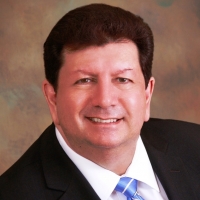I am confused as to whether a rural area is the same thing as a Targeted Employment Area. How does USCIS define a rural area? Are rural areas considered TEAs, or are TEAs only areas which have high unemployment? Is there a different designation process for a TEA versus a rural area?
Answers

J Bruce Weinman
Find an EB-5 Visa Lawyer: Immigration AttorneyA TEA is a Targeted Employment Area - an area, as determined by the state, that suffers from at least 150% of the national unemployment rate. A rural area means an area that is not in a metropolitan statistical area or the outer boundary of a city or town with a population of at least 20,000 (as determined by the Office of Management and Budget). Almost all EB-5 projects are in TEAs; I have never seen one in a rural area.

Ed Beshara
Find an EB-5 Visa Lawyer: Immigration AttorneyThe personal investment requirement is $500,000 and is determined by the fact that the job creating entity is located either in a TEA or a rural area.

Lei Jiang
Find an EB-5 Visa Lawyer: Immigration AttorneyTEA includes rural areas. A rural area means it has a population of less than 20,000.

John J Downey
Find an EB-5 Visa Lawyer: Immigration AttorneyA $500,000 investment can be made into a TEA or a rural area; the definition is included in the regulations. It is a question of either/or.

Fredrick W Voigtmann
Find an EB-5 Visa Lawyer: Immigration AttorneyA TEA can be an area of high unemployment OR a rural area. The USCIS defines "rural area" as one which is outside of a metropolitan statistical area (MSA) and outside of any city or town with a population of at least 20,000. There is no state designation process for a rural area.

Jinhee Wilde
Find an EB-5 Visa Lawyer: Immigration AttorneyTargeted Employment Areas (TEA) include both a rural area with a population of less than 20,000 people and a high unemployment area of 150 percent of the national average unemployment. In order to qualify for the $500,000 investment amount exception to EB-5, the project/business must be located in the TEA.

Lynne Feldman
Find an EB-5 Visa Lawyer: Immigration AttorneyThere are two ways to be designated as a TEA - because of high unemployment or because it is a rural area (less than 20,000 people).

Oliver Huiyue Qiu
Find an EB-5 Visa Lawyer: Immigration AttorneyA "Targeted Employment Area" is, at the time of investment, a rural area or an area that has experienced unemployment of at least 150 percent of the national average rate. A "rural area" is defined as any area not within either a metropolitan statistical area (as designated by the Office of Management and Budget) or the outer boundary of any city or town having a population of 20,000 or more (based on the most recent decennial census of the United States). In other words, a rural area must be both outside of a metropolitan statistical area and outside of a city or town having a population of 20,000 or more.

Kyle Barella
Find an EB-5 Visa Lawyer: Immigration AttorneyRural areas generally do not need state designation for TEA determination. However, a rural area is still considered a TEA like areas of high unemployment.

Salvatore Picataggio
Find an EB-5 Visa Lawyer: Immigration AttorneyRural areas and targeted employment areas both result in the decreased investment amount of $500,000. Most EB-5 projects today are in TEAs designated by a state agency or through the combination of contiguous census tracts.
DISCLAIMER: the information found on this website is intended to be general information; it is not legal or financial advice. Specific legal or financial advice can only be given by a licensed professional with full knowledge of all the facts and circumstances of your particular situation. You should seek consultation with legal, immigration, and financial experts prior to participating in the EB-5 program. Posting a question on this website does not create an attorney-client relationship. All questions you post will be available to the public: do not include confidential information in your question.






